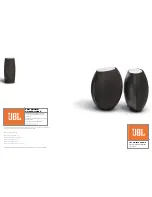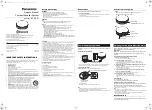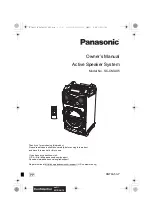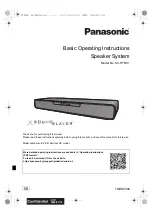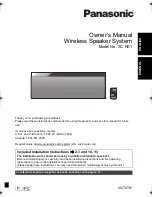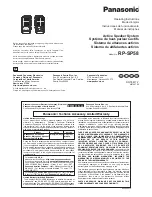
eNGLISH
33
33
FLYING SPARKS may cause injuries.
• Use a face guard to protect your eyes and face.
• Shape the tungsten electrode only in a grinder with appropriate
guards at a safe location using necessary protection for your
face, hands and body.
• Sparks may cause fire – keep inflammables far away.
THE WELDING WIRE may cause you injuries.
• Do not press the trigger of the torch until receiving these
instructions.
• Do not point the tip of the torch towards any point of your body,
any other persons or any metal object when passing the wire.
MOVING PARTS may injure.
• Keep away from any moving parts such as fans.
• Keep any doors, panels, lids and guards closed and in place.
• Achieve that only qualified persons remove doors, panels, lids
and guards to provide maintenance as necessary.
• Reinstall doors, panels, lids and guards after having completed
maintenance and before reconnecting input power.
HIGH FREQUENCY RADIATION may cause interferences.
• High frequency radiation (H.F.) may interfere with radio
navigation, safety services, computers and communication
equipment.
• Make sure that only qualified persons familiarized with
electronic equipment install the equipment. The user takes
responsibility for having a trained electrician who will correct any
problem caused by the installation soon.
• Make sure that the installation receives regular checking and
maintenance.
• Keep doors and panels of a high frequency source completely
shut, keep the distance of the spark at the contact points in its
correct fixation and is grounded and protects countercurrent to
minimize the possibility of interference.
ARC WELDING may cause interference.
• Electromagnetic energy may interfere with sensitive electronic
equipment such as computers or computer-driven equipment
such as industrial robots.
• Make sure that any equipment within the welding area is
electromagnetically compatible.
• To reduce possible interference, keep welding cables as short
as possible, as close together as possible or, on the floor, if
possible.
• Place your welding operation at a distance of at least 100
meters away from any electronically sensitive equipment.
• Make sure that the welding machine is installed and grounded
in accordance with this manual.
• If there still is interference, the operator has to take extraordinary
measures, such as moving the welding machine, use shielded
cables, use line filters, or shield the work area in one way or
another.
2.3.- Reducing electromagnetic fields
To reduce magnetic fields (EMF) in the work area, the following
proceedings should be used:
1. Keep cables as close together as possible, by braiding them,
or joining them with sticky adhesive tape, or using a cable cover.
2. Place cables at one side and away from the operator.
3. Do not wrap or hang cables about your body.
4. Keep welding power sources and cables as far away as
practical.
5. Connect grounding clamp to the piece you are working at, as
near as possible to the weld.
Warning:
In environments with increased risk of electric
shock and fire, such as in the proximity of inflammable
products, explosives, height, restricted free moving
space, physical contact with conductive parts, warm and humid
environments that reduce the electrical resistance of human skin
and apparatus, observe the risk prevention in the workplace and
the national and international provisions as pertinent.
3.- Instruction for putting into operation
3.1.- Positioning
The machine must be positioned in a dry, ventilated area and
with a separation of at least 15cm from any wall. The equipment
may slip when supported on surfaces having an inclination of
more than 3º, so that it shall always be placed on a flat and dry
surface. When placing it on surfaces with a greater slope, secure
the machine with chains or belts. Avoid placing the equipment
when facing wetness or rain.
Avoid the entry of steel shavings into the machine’s inside. Do
not use the grinder next to the equipment.
3.2.-Assembling
The equipment shall be assembled respecting its environmental
limits and positioning it correctly.
3.3.- Mains connection
The equipment is powered by the cable and connector provided
as standard, through a differential circuit breaker and a slow-
feature electromagnetic circuit breaker having an intensity in
accordance with the table of technical features. Any connection
must have a regulatory ground connection and comply with any
national electricity regulations.
In the case of a connection to a power generator, the power
requirements stated in the technical specification are to be
observed. It shall be taken into account that an equipment will
be able to operate with a generator providing less power than
the stated one, with the limitation to use it with a lower maximum
intensity than the nominal one.
3.4.- Limitations to environmental conditions
The equipment shall be installed respecting its IP21 class, which
means that the equipment is protected at the most against
vertical impact of water drops and access to dangerous parts
with one finger against solid 12.5 mm ø or larger foreign bodies.
The equipment is prepared for working within a temperature
range from -15ºC to 70ºC, taking into account the limitation of a
decrease in performance (duty cycle) as of ambient temperatures
above 40ºC.
Summary of Contents for S60.17L
Page 2: ...2 2 Fig 1 S60 17L Fig 2 T100 20H TIG DC 200 HF 1 2 3 4 5 1 2 3 4 6 7 5 10 8 5...
Page 4: ...4 4 Fig 5 PANEL CONTROL T100 25PAHT Fig 6 PANEL CONTROL T40 20PAH...
Page 5: ...5 5 Fig 7 Conexiones de S60 17L TIG LIFT ARC electrodo negativo polaridad directa...
Page 6: ...6 6 Fig 8 Conexiones para soldadura convencional electrodo positivo polaridad inversa S60 17L...
Page 49: ...49 49 NOTAS...
Page 50: ...50 50 NOTAS...
Page 51: ...51 51 NOTAS...































